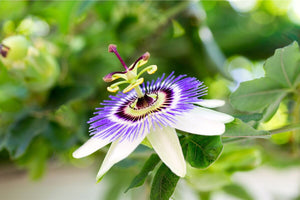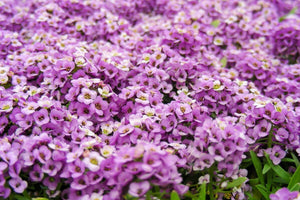What Can You Compost? A Simple List to Create Garden Gold
CompostYou've decided to try composting and create rich, healthy soil for your garden. But what can you compost? Are there things you should avoid? We'll explain the basics of brown and green compostable materials to get you off to a successful start.

What Can You Compost?
There are many things in your home and garden that you can compost. You’ll need both green and brown materials to give your compost a good balance of air and moisture, as well as nitrogen and carbon. Let’s look at general guidelines for materials that make good compost.
Green & Brown Compostable Materials

Green materials are rich in nitrogen or protein and are probably what most people think of when they think of composting. These items are called green because they have a lot of moisture in them, but they might be any color of the rainbow. These items decompose quickly, and add heat to your compost pile as they break down.
Green compostables include kitchen and garden materials such as:
- Fruit and vegetable scraps
- Coffee grounds
- Tea leaves
- Eggshells
- Non-animal food scraps
- Old bread and cooked noodles
- Old herbs & spices that have lost their savor
- Fresh grass clippings
- Fresh leaves & trimmings from the garden
- Dead plants (do not use anything that is diseased or that has gone to seed)
- Deadheaded flowers
- Corn husks and stalks
- Holiday greenery
- Animal manure (not cat or dog)

Brown materials provide food sources for the microbes to break down while adding bulk and airflow to the pile. These include all sorts of dry and woody plant material. They break down more slowly than green materials. Chopping or shredding these items more finely will result in faster breakdown.
Sources of brown compostable material for your compost bin include:
- Autumn leaves
- Dried twigs and garden clippings
- Straw
- Hay
- Sawdust
- Shredded paper (paper towels, paper bags, newsprint, writing paper, napkins, coffee filters)
- Shredded cardboard (non-coated and free of all tape and plastic)
- Pine cones
- Nutshells (excluding black walnut)

Compost Ratio of Green to Brown
For a general rule of thumb, you want about 4 parts brown to 1 part green materials. This is also called the nitrogen/carbon ratio.
Remember that browns will add air to your greens and will cut down on odors if your pile gets smelly. On the other hand, greens help the compost break down faster and add heat and moisture if your pile is sitting there drying out.
Turn your compost every few days to keep it aerated, and add moisture when things are looking dry. As you gain experience, you’ll soon get a feel for the process.
What Not to Compost
Don’t compost dog or cat waste, colored or glossy paper, diseased plants, or weeds that have gone to seed. Black walnut tree leaves and twigs have substances that can harm plant growth, so avoid composting them as well.
In home composting, beginners should also avoid meat, dairy, and other animal products (besides eggshells and livestock manure). Although these items will decompose, they also create sanitation issues and are not safe for the ordinary home compost pile. No one wants to fertilize their garden with listeria, e Coli, or salmonella! Plus, rotting meat and dairy smell terrible, and that stench attracts pests.
Sources of Compost & Materials
It might be hard to make as much compost as you’d like from your own kitchen scraps. Where else can you get compost or compostable materials? Check with your neighbors to see if they can share their kitchen scraps and yard trimmings with you. If you know someone with a farm, they might be willing to provide manure, too.
Check for local municipal or community composting programs if you live in a suburban or urban area. These programs often offer both waste disposal and low-cost or free compost. Gardening clubs, community gardens, and local farmer’s markets are also great resources for helping you with your composting needs.
Pros & Cons of Composting Manure
When you go to the store, you’ll often see composted manure. Manure is often readily available if you or someone near you has livestock like poultry, cows, sheep, goats, or horses. (Do not use cat or dog waste in your compost unless you are an advanced composter.)
Pros of Manure: Manure can be an excellent source of carbon and nitrogen, as well as many other nutrients, depending on the source. Properly composted manure breaks down many contaminants and salt into nutrients so that your plants can easily access the nutrients. In addition, it can improve the soil structure and composition for little cost.
Cons of Manure: Properly composting manure doesn’t always eliminate all contaminants. If livestock has been treated with antibiotics or hormones, the composted manure will still contain levels of these materials. Disease outbreaks have also been connected to using well-composted manure. Manure compost is often behind E. coli recalls. Lettuce and other produce that is eaten raw are especially vulnerable to this sort of contamination since cooking often eliminates the risk.
Manure has to have 3-5 days of steady high compost temperatures of 145° F to kill weed seeds and pathogens. Then, for best effect, manure compost is tilled into the soil and allowed to sit for a couple of months.

What to Compost FAQs
Can you compost paper towels?
Paper towels are made out of trees and are compostable. They considered a brown material.
Can you compost bread?
Bread, crackers, noodles, all of these products can be composted. They are considered green materials.
Can you compost dog poop?
Dog and cat waste shouldn't be added to a home compost system. However, waste from herbivore pets such as rabbits and hamsters can be composted.
Composting doesn't have to be complicated. With this list of compostable materials, you will know what you can compost and what to avoid. It'll be a source of pride that you can reduce landfill waste while creating a better growing space.
Written by Teresa Chandler







Very good and straight forward information. Very easy to understand for us new gardeners.
Leave a comment